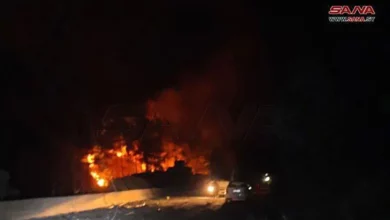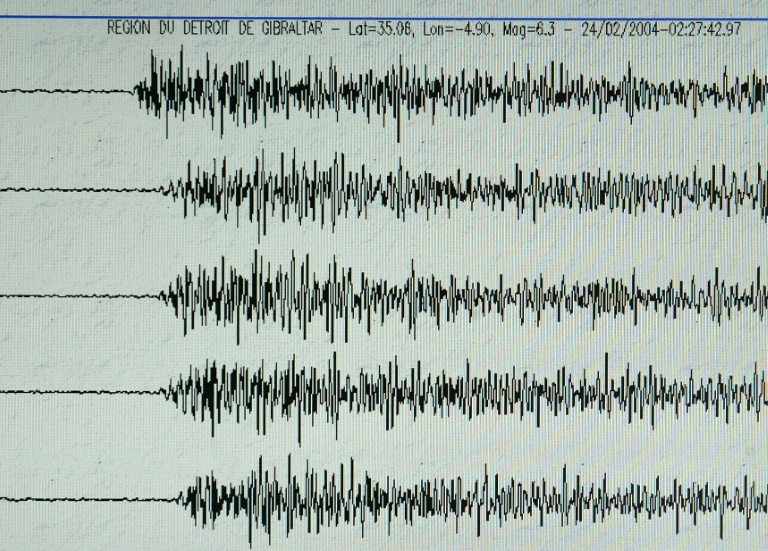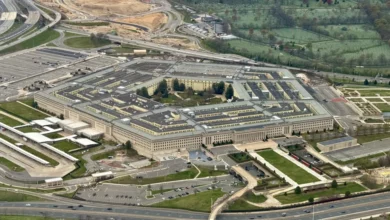
The distant thud of an artillery strike breaks the illusion of tranquility in a small village several kilometers to the north of Aleppo, Syria. There is little else to hear except children in the distance and a light breeze blowing through the dry and dusty roads.
The children are amusing themselves outside a small hut in the village, which used to be a school. Its two small rooms are now home to 30 people from four families who have fled the violent battle that has engulfed Aleppo. “The situation here is absolutely desperate; there is no electricity, or bread or drinking water,” says Abu Tariq, a father of one of the families in the hut.
Abu Tariq, his wife and their three young children are among the 1.2 million internally displaced people within Syria, according to a recent estimate by the United Nations Office for the Coordination of Humanitarian Affairs. The eruption of fighting between the opposition Free Syrian Army (FSA) and the forces of Bashar al-Assad's regime in late July caused hundreds of thousands of people to flee the city, compounding the dislocation of Syria’s people.
“I made the decision to move as soon as they started bombing with the airplanes. At the beginning of Ramadan the FSA entered Aleppo and there were clashes for a few days before the government started bombing from the sky,” says Abu Tariq. While the FSA has managed to take control of over half of the territory within the city, the government has unleashed a ferocious campaign of aerial bombardment from fighter jets, attack helicopters and artillery. The destruction it has meted out on the city has been extensive and arbitrary. Homes, schools, factories and hospitals have all fallen victim.
The countryside only offers partial protection. Two hundred meters from the families’ hut there is a small store, which was hit by an artillery strike only weeks before. By an ironic stroke of good luck, the store was closed owing to the bad economy and hence nobody was inside when the shell smashed through the roof.
In the months preceding the battle for Aleppo, the FSA took control of the towns and villages to the north of the city all the way up to the Turkish border. The regime stills bombs these areas on a daily basis, ensuring nowhere is completely safe. The graveyard next to the school has freshly dug graves in anticipation for a coming attack.
“There is nowhere safe in Syria but the situation in the camps in Turkey is also really very difficult. We are staying here until the battle stops,” says Abu Tariq. Almost 90,000 refugees have fled to Turkey but every day at the border crossing families can be seen returning to Syria, choosing the insecurity at home over the destitution next door.
The families in the school hut are eking out a living on basic essentials that are donated from local families and religious institutions. A large pile of firewood is stacked up outside the building as cooking gas has become a luxury that many cannot afford; the price for a canister has skyrocketed this past year from around US$8 to anywhere between $80 to $100.
“We want the humanitarian organizations to see the reality of the refugees but nobody is here to see our situation or offer any help,” pleads Abu Tariq. According to the United Nation’s World Food Program (WFP) the number of Syrians in need of food aid has increased fivefold in recent months as civil war wages across the country, rising from 250,000 in April to 1.5 million in late September.
The WFP’s agency director, Ertharin Cousin, concedes that they have only managed to feed half that number so far. The major funding appeal targeting those in need within Syria is the UN-led Syria Humanitarian Assistance Response Plan and the appeal target was revised from $180 million to $347 million in early September, due to the rapid increase in the number of people in need.
Several kilometers to the south, back in the city of Aleppo, many refugees from other conflict areas in the country now find themselves back in the firing line. An apartment block in FSA-held territory in the east of the city is full of families from regions such as Idlib, Deir al-Zor, Hama and Homs. Until recent months Aleppo had, in the main, managed to stay aloft from the violence ravaging the country, and therefore provided a safe haven for those fleeing violence elsewhere.
The city is now at the heart of the nation’s bloody internecine conflict and the neighborhood in which the refugees live is bombed on a near daily basis. In one of the apartments, 30 women and children from Homs are sharing three small and dingy rooms. The electricity is often cut and the windows have been smashed by a recent artillery strike. Explosions intermittently reverberate throughout the building as the battle rages nearby.
“Everywhere we go there is fighting and shelling. Where can we go? There is nowhere left for us to go. The street is not safe, the house is not safe. Nowhere is safe,” laments one of the women. Their hometown of Homs has been at the heart of the uprising from its inception and has witnessed some of the most prolonged and intense fighting.
“When we first arrived here it was fine and there was lots of support from people. But when the problems started in Aleppo, that stopped and now we can’t get support for food or medicine or anything,” she explains. Indeed, trade and economic life within the city has all but dried up. Thousands of shops, markets, businesses and factories have their shutters pulled down. Fruit and vegetable stalls, basic corner shops and roadside petrol sellers are the few vendors still in operation.
Across the road from the women’s apartment around two dozen people wait in line at a bakery. The price of bread has risen three to fourfold since the violence erupted and the queues at bakeries are a part of daily life in Aleppo. While a group of men in the queue discuss the problems overwhelming their city, one of them explains that they are all scared to wait there but they need to if they are to feed their families. There were 10 cases of artillery bombardment and air strikes on bakeries in August alone according to Human Rights Watch.
Inflation within the city and the surrounding countryside has risen sharply this past year leveling a crippling burden on many. Fuel has doubled in price over the past year, the cost of fertilizer has risen approximately fivefold over the past two years and the insecurity is making it increasingly difficult to transport agricultural produce around the country and from the countryside into the city. There are shortages of basic fruit and vegetables in Aleppo and their prices are around three to five times higher that last season. It is the poor and the displaced who are feeling the squeeze the most.
The Aleppo countryside is normally a rich region for potatoes, nuts, tomatoes, beans and pulses but Abu Abdallah, an agricultural engineer who serves farmers in the region, warns of a food crisis in the coming winter if the violence persists. The Joint Rapid Food Security Needs Assessment for Syria in June 2012 concluded that the farming and livestock-based livelihoods and household-level food security are threatened for around 30 percent of the rural population and internally displaced families, which combined amounts to around 3 million people, and they need urgent assistance.
As the violence and chaos inundates more and more of the country there are few safe havens left to flee to. With the economy and agriculture under severe strain and the war intensifying, it threatens to be a bleak winter for those Syrians that have become refugees in their own homeland.




